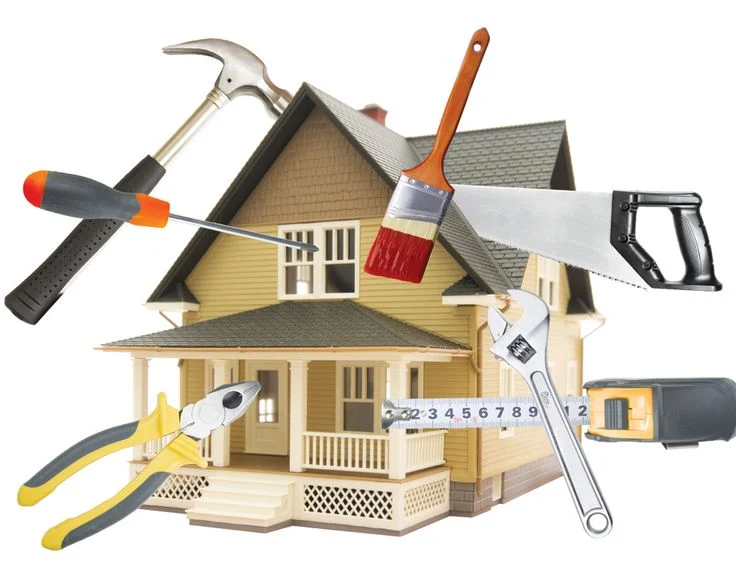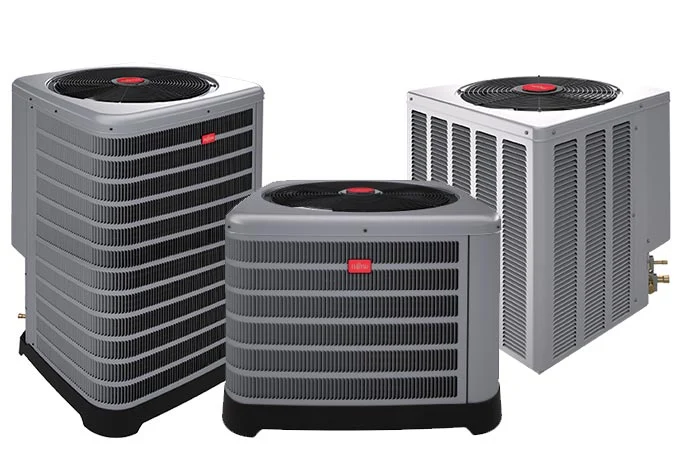Get Your FREE Estimate Today
By submitting this form, you consent to receive updates from us. We respect your privacy and will use your information per our Privacy Policy. You can unsubscribe anytime via the instructions in our emails.
Complete Guide to 2025 Tax Savings
Energy-Efficient Home Improvement Credit: A Complete Guide to 2025 Tax Savings
Are you looking to make your home more energy-efficient while saving money on taxes? The Energy Efficient Home Improvement Credit (formerly known as the Nonbusiness Energy Property Credit) offers significant financial incentives for homeowners who invest in qualifying energy-saving improvements. This comprehensive guide walks you through everything you need to know about maximizing this valuable tax credit in 2025.
What Is the Energy Efficient Home Improvement Credit?
The Energy Efficient Home Improvement Credit is a federal tax incentive designed to encourage homeowners to make energy-efficient upgrades to their primary residences. This credit, which was significantly expanded under the Inflation Reduction Act of 2022, allows taxpayers to offset a portion of the costs for qualifying energy-efficient improvements directly against their tax liability.
Unlike a tax deduction that merely reduces your taxable income, a tax credit reduces your tax bill dollar-for-dollar, making it a much more valuable benefit for most homeowners.

Key Changes for 2023-2032
The Inflation Reduction Act dramatically transformed this tax credit, making it more generous and accessible than ever before:
- Credit Increase: The credit percentage jumped from 10% to 30% of qualified expenses
- Annual Limit Expansion: The maximum credit increased from $500 lifetime to $1,200 annually
- Extended Timeline: The credit is now available through December 31, 2032
- Broader Eligibility: More types of energy-efficient improvements qualify
These enhancements make 2025 an excellent time to consider energy-efficient home improvements.
Who Can Claim the Credit?
You may qualify for this credit if you:
- Are a U.S. taxpayer
- Own and use the property as your primary residence
- Install qualifying energy-efficient improvements
- Have the improvements placed in service during the applicable tax year
- Maintain proper documentation of your expenses
Renters, unfortunately, cannot claim this credit since they don’t own the property. Similarly, improvements to second homes or rental properties don’t qualify.

Qualifying Energy-Efficient Improvements
The credit covers two main categories of improvements:
1. Energy-Efficient Building Components
These include:
- Exterior Doors: Up to $250 per door (maximum $500 annually)
- Windows and Skylights: Up to $600 annually
- Insulation Materials: 30% of costs (part of the $1,200 annual limit)
- Roofs: Metal and asphalt roofs with pigmented coatings or cooling granules
Energy-Efficient Home Equipment
These include:
- Heat Pumps, Heat Pump Water Heaters: Up to $2,000 annually (separate from the $1,200 limit)
- Central Air Conditioners: 30% of costs (part of the $1,200 annual limit)
- Natural Gas, Propane, or Oil Water Heaters: 30% of costs (part of the $1,200 annual limit)
- Natural Gas, Propane, or Oil Furnaces and Hot Water Boilers: 30% of costs (part of the $1,200 annual limit)
- Biomass Stoves and Boilers: Up to $2,000 annually (separate from the $1,200 limit)
- Electrical Panel Upgrades: Up to $600 (when installed with other qualifying improvements)
- Home Energy Audits: Up to $150

Annual Credit Limits
Understanding the credit limits is crucial for tax planning:
- General Annual Limit: $1,200 for most qualifying improvements
- Special Category Limit: An additional $2,000 for heat pumps, heat pump water heaters, and biomass stoves/boilers
- Item-Specific Limits:
- $600 for windows and skylights
- $500 total for doors ($250 per door)
- $600 for electrical panel upgrades
- $150 for home energy audits
This means a homeowner could potentially claim up to $3,200 in a single year by maximizing both the general limit and the special category limit.
Energy Efficiency Requirement
Not all energy-efficient products qualify for this credit. To be eligible, products must meet specific energy efficiency standards:
- Windows, Doors, and Skylights: Must be ENERGY STAR certified
- Insulation: Must meet the 2009 International Energy Conservation Code standards
- HVAC Equipment: Must meet either ENERGY STAR certification or Consortium for Energy Efficiency (CEE) ratings
- Water Heaters: Must meet Uniform Energy Factor requirements based on type and capacity
Always check the manufacturer’s certification statement or ENERGY STAR website to confirm eligibility before purchase.

How to Claim the Credit
Follow these steps to claim the Energy Efficient Home Improvement Credit on your tax return:
- Keep Detailed Records: Save all receipts, manufacturer’s certification statements, and product documentation.
- Complete Form 5695: Fill out the “Residential Energy Credits” form when filing your taxes.
- Transfer the Credit: Enter the calculated credit amount on Schedule 3 of Form 1040.
- File Your Return: Submit your complete tax return with all required forms.
It’s important to note that you don’t need to itemize deductions to claim this credit. It’s available to all qualifying taxpayers regardless of whether they take the standard deduction.
Strategic Planning for Maximum Benefits
To maximize your tax savings:
- Spread Improvements Over Multiple Years: Since the credit renews annually, consider planning larger projects across tax years to avoid exceeding annual limits.
- Combine with Local Incentives: Many utility companies and state programs offer additional rebates or incentives that can be combined with federal tax credits.
- Prioritize High-Return Upgrades: Heat pumps and insulation often provide the best combination of energy savings and tax benefits.
- Consider Home Energy Audits: A professional assessment can help identify the most cost-effective improvements for your specific home.
Example Scenarios
Scenario 1: Moderate Home Upgrades
Sarah invests in several energy-efficient improvements in 2025:
- ENERGY STAR windows: $2,500
- Attic insulation: $1,800
- Home energy audit: $300
Her credit calculation:
- Windows: $600 (maximum limit for windows)
- Insulation: $540 (30% of $1,800)
- Energy audit: $150 (maximum limit for audits)
- Total credit: $1,290
Scenario 2: Major Home Overhaul
The Johnson family completes extensive energy upgrades:
- Heat pump installation: $8,000
- ENERGY STAR exterior doors (2): $1,800
- Electrical panel upgrade: $2,200
Their credit calculation:
- Heat pump: $2,000 (maximum for special category)
- Doors: $500 (maximum $250 per door, up to $500)
- Electrical panel: $600 (maximum limit)
- Total credit: $3,100
Common Questions About the Energy Efficient Home Improvement Credit
Can I claim the credit for improvements made to a newly constructed home?
No, the credit only applies to improvements made to existing homes. However, energy-efficient systems initially installed in a new home might qualify for other tax incentives like the Residential Clean Energy Credit.
What documentation do I need to keep?
Retain all receipts, manufacturer’s certification statements confirming the product qualifies, and any documentation showing the product meets required efficiency standards. Keep these records for at least three years after filing your tax return.
Can I claim this credit if I receive utility or state rebates?
Yes, you can typically claim the federal tax credit even if you receive state or utility incentives. However, you should only claim the credit on your actual out-of-pocket expenses after any rebates or discounts.
What happens if my credit exceeds my tax liability?
Unfortunately, the Energy Efficient Home Improvement Credit is non-refundable. This means if your credit exceeds your tax liability, you won’t receive the difference as a refund. However, unlike some other credits, this one cannot be carried forward to future tax years.
Benefits Beyond Tax Savings
While the tax credit provides immediate financial benefits, energy-efficient improvements offer additional advantages:
- Lower Utility Bills: Many improvements pay for themselves over time through reduced energy costs
- Enhanced Home Comfort: Better insulation and efficient HVAC systems create more consistent temperatures year-round
- Increased Property Value: Energy-efficient features are increasingly valued by homebuyers
- Environmental Impact: Reduced energy consumption means lower carbon emissions
Planning Your Energy-Efficient Improvements
When planning your energy upgrades:
- Start with an Energy Assessment: A professional audit can identify the most impactful improvements for your specific home.
- Focus on Building Envelope First: Improving insulation, sealing air leaks, and upgrading windows/doors provides the foundation for energy efficiency.
- Then Address Mechanical Systems: Once your home is well-insulated, consider upgrading heating, cooling, and water heating systems.
- Verify Tax Credit Eligibility: Always confirm products meet the specific requirements before purchasing.
Conclusion
The expanded Energy Efficient Home Improvement Credit offers homeowners a valuable opportunity to improve their homes’ energy efficiency while receiving significant tax benefits. By understanding the qualifying improvements, credit limits, and strategic planning approaches outlined in this guide, you can maximize both your immediate tax savings and long-term energy cost reductions.
Remember that energy-efficient improvements represent an investment in your home’s comfort, value, and environmental impact. The tax credit simply makes these wise investments even more financially attractive.
For personalized advice regarding your specific tax situation, consult with a qualified tax professional before making major home improvement decisions.
Internal Linking Opportunities:
- Home Energy Audit Benefits and Process
- Heat Pump Systems: Types and Efficiency Ratings Explained
- Understanding ENERGY STAR Certification for Home Products
Authoritative Sources:
- IRS Official Guidance: https://www.irs.gov/credits-deductions
- ENERGY STAR Product Database: https://www.energystar.gov/products
- Department of Energy Efficiency Standards: https://www.energy.gov/energysaver/energy-efficient-home-design
- Database of State Incentives for Renewables & Efficiency: https://www.dsireusa.org
- Inflation Reduction Act Information: https://www.whitehouse.gov/cleanenergy
